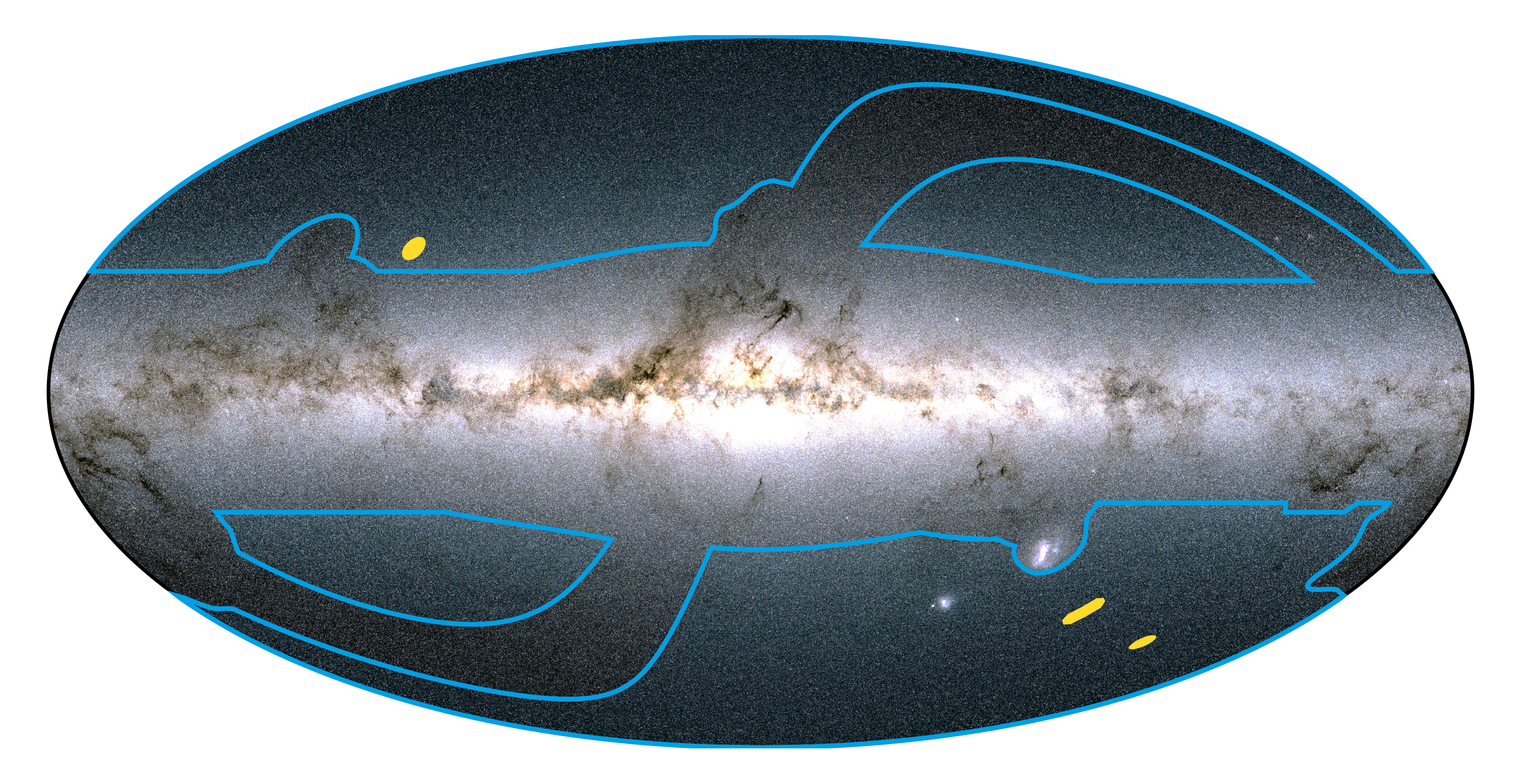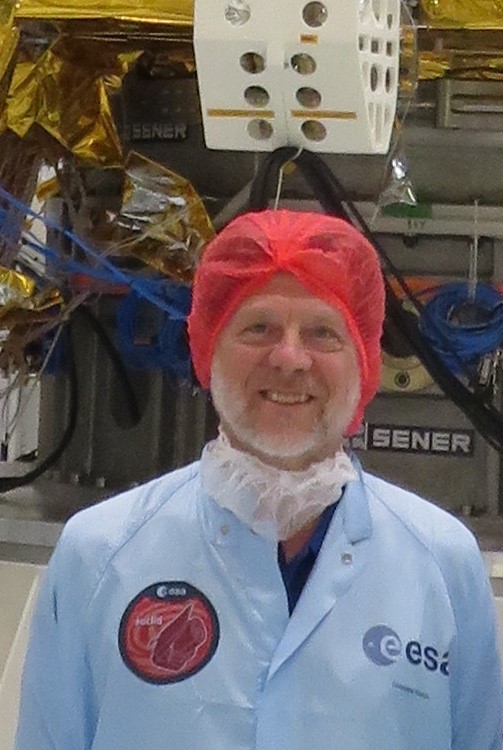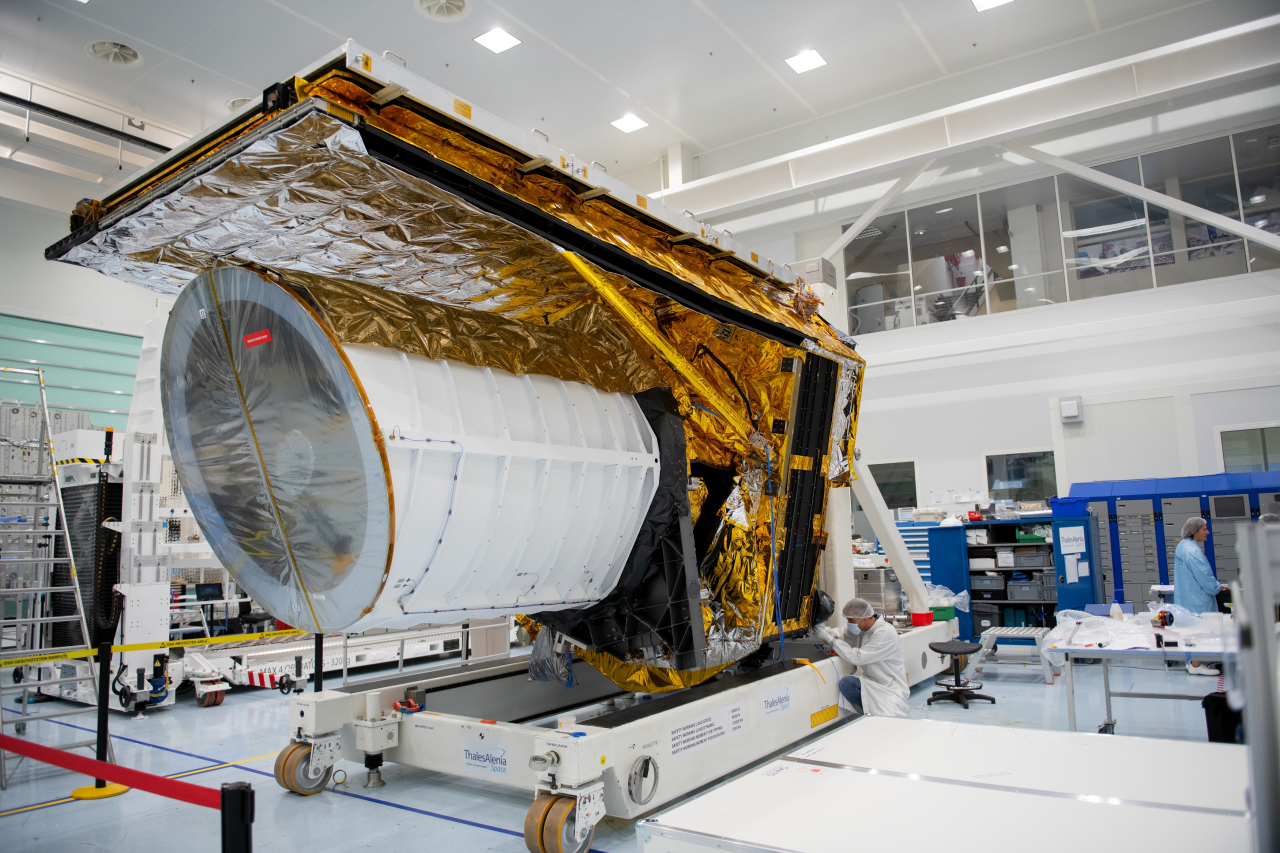Euclid mission: ESA's hunt for dark matter and dark energy

The European Space Agency's Euclid mission will map the geometry of matter in the universe, specifically in the form of the distribution of galaxies to learn more about the parts of the universe we can't see — dark energy and dark matter.
Euclid launched on July 1 at 11:11 a.m. EDT (1511 GMT) from Cape Canaveral, Florida aboard a SpaceX Falcon 9 rocket.
The mission aims to chart 1.5 billion galaxies over the past 10 billion years of cosmic history over its expected six-year lifetime.
Related: If dark matter is 'invisible,' how do we know it exists?
Where will Euclid go?
It will take roughly 30 days for Euclid to make its way to its destination at the L2 Lagrange point — the same location shared by several other spacecraft including the James Webb Space Telescope. L2 lies about a million miles (1.6 million km) from Earth but in the opposite direction to the sun. It is a special location because it is at L2 that the gravity of Earth and the sun balance with the outwards centrifugal force acting on the spacecraft as it swings around Earth in its orbit. This makes the location quasi-stable — the spacecraft doesn't get flung deeper into space, but it does require maneuvering thrusters for station keeping.
L2 also provides a clearer view of deep space, with the Earth,moon and sun always behind the spacecraft. This is essential if Euclid is going to succeed in its mission of charting 1.5 billion galaxies over the past 10 billion years of cosmic history, producing an image quality four times sharper than comparative ground-based surveys.
As a survey mission, Euclid will last at least six years and cover 15,000 square degrees of sky. Its survey will be performed in a "step and stare" mode, meaning that the telescope will point and make measurements on about 0.5 square degrees of the sky at a time.
Breaking space news, the latest updates on rocket launches, skywatching events and more!
Who is the Euclid mission named after?
It's fitting for a space mission that will be mapping the geometry of the universe to be named after the father of geometry. The Greek mathematician Euclid of Alexandria lived during the time of Alexander the Great, and although the known details of his life are sketchy at best, his legacy was the invention of geometry as a mathematical subject. Euclid invented what we refer to today as Euclidean geometry, which is the basis for mathematical fields such as trigonometry.
The universe also has Euclidean geometry. Measurements by NASA's Wilkinson Microwave Anisotropy Probe (WMAP) show that the universe is 'flat' and does not have a curvature like a sphere or a saddle. Parallel lines remain parallel forever, and the interior angles of triangles always add up to 180 degrees.
Read more: Who is the Euclid 'dark universe' space telescope named after?
What will Euclid do?
Euclid will show scientists more about the 'dark universe'. One of its main goals is to accurately map galaxy redshift — the stretching of light to redder wavelengths as an object moves away from us, as is the case as the universe expands in all directions. Hubble's Law tells us that the distance to a galaxy is related to how fast the expansion of the universe is carrying that galaxy away from us, and the higher the recession velocity, the more distant the galaxy and the higher its redshift. Therefore, measuring the redshift tells astronomers the rate of the universe's expansion and the strength of dark energy as it accelerates that expansion. The mission will look back to galaxies that existed as long as 10 billion years ago (a redshift of about 2), or more than double the solar system's age. Over at least 6 years, Euclid will map about 36% of the sky, and perform an extra-deep survey across three smaller fields of the sky totaling 40 square degrees.
Related: How will Europe's Euclid space telescope see into the dark universe?
Euclid's detectors will conduct two cosmological probes. One will study weak gravitational lensing — the marginal bending of light by concentrations of matter. This is useful for mapping the location of dark matter around galaxies and galaxy clusters by measuring how much the galaxy images are distorted by the lensing.
The other probe will study baryonic acoustic oscillations (BAO), relics of fluctuations in the cosmic microwave background (CMB) radiation that today manifest themselves in the spatial distribution of galaxies. Across very large scales, galaxies tend to cluster in pairs separated by a standard distance. This standard distance is linked to sound waves in plasma (ionized gas) in the early universe; the sound waves propagated as density waves through the plasma and are linked today to the locations of dark matter halos, or concentrations of dark matter associated with galaxies. The size of this standard distance increases over time as the universe expands, so BAOs are therefore a standard ruler to measure the universe's expansion, and hence the strength of dark energy at different eras in cosmic history.
Euclid FAQs answered by an expert
We asked Giuseppe Racca, the European Space Agency's Euclid project manager, a few frequently asked questions about the Euclid mission.
How will the Euclid mission improve our understanding of dark energy?
Dark energy is essentially a nickname for something that makes the universe expand in an accelerated fashion. This acceleration seems to have kicked off about 5 billion years ago, and was discovered by observing from ground observatories the recession velocity of distant galaxies.
The acceleration behavior is consistent with a sort of "repulsive" energy of the vacuum with constant density or a cosmological constant of the General Relativity equations, which describe the gravity as a matter versus space-time geometry relationship. Euclid will improve our understanding essentially by measuring whether the dark-energy density is really constant over the last 10 billion years.
What will mapping galaxies teach us about dark matter?
Dark matter is the predominant form of matter in the universe. Without it, the stars probably would not have formed in the early universe, and the presence of dark matter across the universe is essential to all cosmic structure formation.
Dark matter is not visible and does not absorb radiation, but deflects light because of its gravitational pull (more exactly because of its warping of space-time) and deforms the shape of the galaxies as seen by the observer. This effect is called gravitational weak lensing. By observing distant galaxies, whose light has traveled through the matter (dark and regular) from the source to us, we can measure the distribution of dark matter in its path. By doing this with billions of galaxies, Euclid will build a full map of the distribution of dark matter in the entire universe.
How does Euclid differ from other dark energy studies?
There are indeed many cosmological surveys, mainly on the ground and one planned (NASA's Roman Telescope) from space. Euclid's quality is in its image sharpness, which allows it to minimize the systematic errors concerning the aforementioned weak lensing probe. Moreover, the Euclid telescope's characteristic design allows it to cover a large amount of the sky (36%) in a relatively short time (6 years) with unprecedented accuracy and precision. Concerning the spectroscopic capability, Euclid will also make observations of light from galaxies at near-infrared wavelengths, which is absorbed by the atmosphere and is therefore not visible from the ground. This capability is used to accurately measure the recession velocity of hundreds of millions of galaxies as far as 10 billion light years.
The Euclid spacecraft
As a 4,630 lbs (2,100 kg) spacecraft, 14.7ft (4.5 meters) tall and 10.2 ft (3.1 m) in diameter, Euclid is fairly modest compared to the size and complexity of the James Webb Space Telescope. Euclid's science will be performed by two instruments, and its onboard 3.9 ft (1.2-meter) telescope will capture and split light between them for analysis.
One of these instruments is a visible imager (VIS), which will include 36 charge-coupled devices (CCDs) specially formulated for the mission. The field of view of VIS is 0.787 degrees by 0.709 degrees (a little larger than the area covered by two full moons in the sky).
The second instrument is the Near-Infrared Spectrometer and Photometer (NISP), which will provide near-infrared photometry of galaxies. The aim is to combine VIS' and NISP's observations to accurately measure the redshift of galaxies.
The NISP will also investigate the chemistry of galaxies and the motion of stars and gas within them to find out how galaxies spin and to shed light on how they formed.
What are dark energy and dark matter?
Dark energy and dark matter make up most of the mass and energy in the universe. Dark matter is an unseen substance, the presence of which we can only infer from its gravity. Dark matter contributes about 26.8% of all the matter and energy in the universe. Dark energy, on the other hand, is a mysterious energy field that is accelerating the expansion of the cosmos and accounts for about 68.3% of all the mass and energy in the universe. The remaining 4.9% is everything else that we can see in the universe —- people, planets, stars, nebulas and galaxies, according to ESA.
Together, dark matter and dark energy affect the geometry of the universe. Clumps of dark matter create gravitational wells that can bend the otherwise straight paths of light from more distant objects, while by driving the accelerated expansion of the universe, dark energy pulls clumps of matter away from one another, lowering the overall density of matter in the cosmos. By measuring how they affect the universe, astronomers can gain important insights into their puzzling natures.
Additional resources
Read the story behind the discovery of dark energy at the Hubble Space Telescope's official website and learn about the life of Vera Rubin, who discovered the evidence for dark matter, in her obituary from the National Science Foundation. Also, check out this summary of the mysteries of dark matter and dark energy at NASA's Science Mission Directorate.
Bibliography
The European Space Agency mission page for Euclid.
The European Space Agency's Planck mission page.
NASA's WMAP mission, a precursor to Planck.

Keith Cooper is a freelance science journalist and editor in the United Kingdom, and has a degree in physics and astrophysics from the University of Manchester. He's the author of "The Contact Paradox: Challenging Our Assumptions in the Search for Extraterrestrial Intelligence" (Bloomsbury Sigma, 2020) and has written articles on astronomy, space, physics and astrobiology for a multitude of magazines and websites.
- Elizabeth HowellFormer Staff Writer, Spaceflight (July 2022-November 2024)



